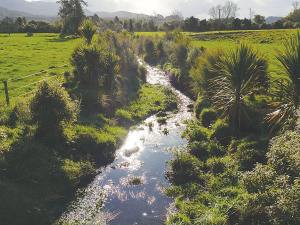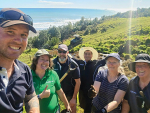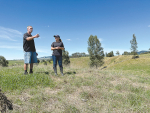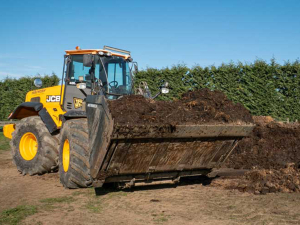When planning a project it is important to be clear what current conditions exist, what information you need to collect to determine this and importantly a clear understanding of the goals you wish to achieve.
A lack of clear goals, especially among the restoration community (neighbouring farms and lifestyle blockers) is a key reason such projects fall over. A lack of careful design is another key issue.
With goals and design in mind, it is important to start by determining the current state of your site, and a position on site for assessment and monitoring to be undertaken. This should include a site map (dimensions and current positioning of plants), a review of site management, a visual assessment of the site internally and from its edge, noting numbers, types and the state of the current canopy plants, threats or negatives (e.g. weeds, goats) apparent, along with positives like bird and insect present.
Photographic evidence is also valuable here. Once you have identified the plants you wish to keep, it is also a good idea to start thinking about what you would like to plant and where.
A map or sketch at this point will help you envisage your best outcome or goal. Several good riparian plants including flax, toe toe and grasses like carex to stabilise the soil, fix nitrogen and clean water pollutants. Plant these closest to your water, then aim for the taller plants (e.g. tree fuchsia, kanuka, manuka, kowhai and cabbage trees) to be a little further back up the banking. If you have problems with persistent weeds and are concerned they will take over, introduce trees that will also grow fast, (e.g. wineberry and tree lucerne, the later also being a handy addition to your stock feed) to block light from your weeds.
The present quality of the stream water also needs to be understood. Riparian plants will help to reduce nitrogen wash off from your land, but this is not the only goal. Good oxygen levels in the water will encourage fish and insect life and improve the ecosystem dynamics, but is also strongly affected by agricultural activities upstream.
When embarking on a project communicate your vision with neighbouring farmers and lifestyle blockers. Persuasion may be needed and the ability to work together to a unified goal is of utmost importance. When collecting information on existing birds and insects, volume of song and visual counts are useful. To determine insects present, simple methods like pitfall traps and leaf litter sampling within a given area (possibly 5M2 for smaller, quarter hectare plots, multiplying up for larger multi hectare sites) are a starting point.
This pre-setup data will aid the development of goals. For example, weeds like blackberry could be an issue needing to be dealt with, but the plan to tackle this may have consequences also needing to be addressed (e.g. chemicals polluting close waterways, requiring monitoring) and included in the plan. Once goals (e.g. weed management, water quality improvement, soil erosion control, honey production or more holistically, a general ecosystem improvement) are determined, create a sketch to visualise outcomes.
A brief written plan outlining steps to achieve goals is useful, this can also note what will be monitored, including frequency required. Pre-setup data will also highlight other issues prior to actioning your plan. Making the site safe to work in is of prime importance. If your site is large, pre-determining the initial section size (and any additional plots for subsequent years), including monitoring and maintenance requirements should also be considered at the start.
Should weeds be an issue (e.g. blackberry), potentially choking new seedlings, then photographs from one monitoring visit to the next will indicate problems and progress. Frequency of monitoring would depend on weeds present, but for tough weeds monthly spring to mid-autumn (e.g. blackberry) for at least the first four years, until riparian plants take hold. Weedbusters.org.nz has useful information on sprays and concentrations for different weeds.
If a goal is to naturally regenerate desired plants you had in your initial inspection, then you need to track and record new seedlings taking hold in your plot.
Large areas are difficult to track, so mark out (again digital photography is helpful) several given sections (maybe 5M2 plots) to follow close by your existing desired plants. Monitor each season for the first year, then annually until these seeds hold good (maybe for seven years). If you are looking to plant new seedlings or riparian plants, follow a similar monitoring pattern.
Another goal may be to be to improve quality of water in your creek. Many simple techniques can assist understanding water quality at little cost and complexity. For example, water speed (indicating oxygen levels) can be gauged by dropping an object in the water and timing its
movement along a given stretch (use the same method over time to monitor quality). Similarly, clarity can indicate general water quality by repeatedly observing a set amount of water in a given glass vessel or bottle.
Increasing type and number birds and insect life may also be a goal. Marry this monitoring in with checking weeds, seedling growth and water quality in terms of frequency.
Pitfall traps and leaf litter sampling are simple and inexpensive methods of tracking type and numbers of ground living invertebrates (e.g. ground beetles and snails). Generally, the more insects (and flowering trees like kowhai and wineberry) you have, the more bird life you have. Don’t forget to photograph (and date) them too and track bird song.
If you are unsure who you can hear singing away, online recordings of New Zealand bird song can be heard for identification at DOC’s website.
Riparian planting can turn around water, vegetation and bird life at your site, but clear goals, based on a shared vision with neighbours are needed. It’s not without much work and commitment, but the benefits to local and regional community can include economic, social and environmental factors. Remember, community can start at home, getting the kids involved too can be a fun family activity and a great way to educate the next generation.
Adele Carson (Bsc (Hons) PGCE, MMgmt) is a senior lecturer - Business Management Faculty at Toi-Ohomai Institute of Technology


















